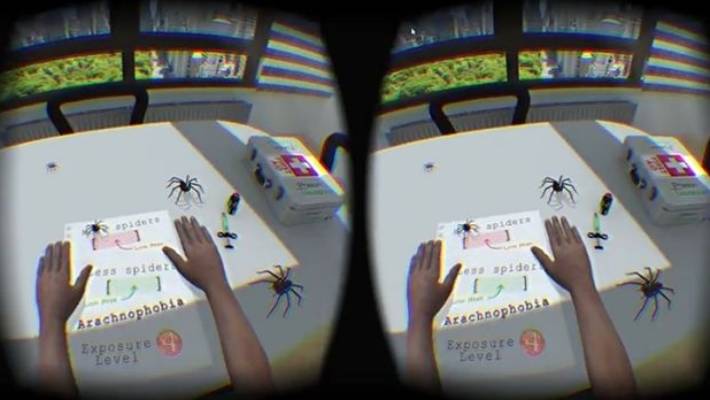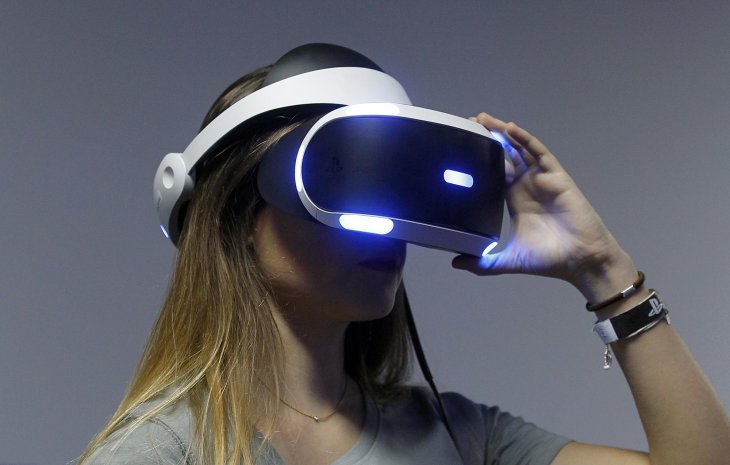Virtual Reality Therapy Can Help Combat Arachnophobia
Viswamitra Jayavant - Mar 06, 2019

Researchers from the University of Texas at Austin had found an alternative use for VR headsets: Treatment for arachnophobia.
- How Virtual Reality Could Transform Online Bingo
- The Biggest Online Casino Tech Trends of 2020
- VR S.e.x Partner Pleasures Men With S.e.x Toys In Real Life Available For Rs. 12,865
Virtual Reality is a new trend among tech companies. Since the creation and the popularisation of the Oculus Rift’s headset in 2016, we have seen more and more pieces similar to it on the market, HTC Vive and the PlayStation VR, to name a few.
But they are used mostly for gaming purposes. Despite people’s efforts to find new, innovative usages for these headsets besides entertainment, not a lot had impressed. But researchers at the University of Texas at Austin has managed to find another use for the clunky headset.
And it is actually useful.
The researchers from the University’s Anxiety and Health Behaviours Lab are considering using VR technologies to help people combat anxieties and phobias. There is no limit to what people are afraid of, including strange things like taking a shower (Ablutophobia). They are still keeping the scope of their experiment narrow, focusing on a common phobia being Arachnophobia (Fear of spiders). VR therapy can also be used for fear of insects (Entomophobia) and creatures such as snakes (Ophidiophobia).

In the past, without the aid of VR, the most effective (Albeit anxiety-inducing) solution for such phobias is through shock-therapy. For example, by putting the patient’s hand into a box or a tank filled with spiders. The aim is to make them more comfortable with the object of their fear, and possibly make peace with it. With the help of VR, this method can make the patient more comfortable while undergoing treatment. According to the team’s paper published in the Journal of Anxiety Disorders, people who went through this virtual stage found it easier to fight their fears.
VRET stands for Virtual Reality Exposure Therapy, and it is a type of treatment based on 360-degree video virtual reality. It is relatively easy to spot the ‘fakeness’ of computer-generated imagery (CGI). But VRET makes the effects very convincing to the patient thanks to panorama-video technology which creates a photo-realistic environment.
But the best thing about this is that the researchers did not use any sorts of specialized, expensive hardware. You can find every component used in the project on the shelves of the local tech store! If you know what and how to do, it is completely possible for you to build a rig just like theirs by yourself.

The researchers used two cameras to mimic the distance between the human eyes with a 3D dual-camera rig. The two cameras work in tandem to provide a ‘cinematic’ experience for the patient.
The left lens of the headset will show the images taken by the left camera and vice versa. The VR headset used in the project was a consumer-grade headset that you can find for a few hundred dollars.
Unlike traditional shock-therapy, patients enter the simulation knowing that there aren’t actually any spiders. This helps greatly with alleviating stresses and anxieties. 77 college-aged students with arachnophobia participate in experiencing the video-therapy.
The researchers asked a randomized group of students to watch a regular documentary about spiders. While the other group gets to experience a stereoscopic 3D course via VR rig. After watching the educational videos, the test began. Researchers asked the students to walk into a room with different conditions inside.
There is a total of fourteen levels, starting from one. The first level is entering the room with a live tarantula sealed inside a terrarium. Each level increases the exposure the student had with the spider. Ultimately, the students were asked to take the spider out of its casing and hold it in their hands for 15 seconds.

The VR treatment gave significant improvement in results. For those exposed to a traditional 2D documentary, they stopped at level seven on average. However, for those who had 3D experience, they could reach level 10.5. Sean Minns - the research’s leader, concluded that the new treatment is clinically viable and significant.
Aside from being the potential next great method for psychologists to treat phobias, it is also a testament to how creative use of contemporary technologies can reap amazing discoveries.
Featured Stories

Features - Jul 01, 2025
What Are The Fastest Passenger Vehicles Ever Created?

Features - Jun 25, 2025
Japan Hydrogen Breakthrough: Scientists Crack the Clean Energy Code with...

ICT News - Jun 25, 2025
AI Intimidation Tactics: CEOs Turn Flawed Technology Into Employee Fear Machine

Review - Jun 25, 2025
Windows 11 Problems: Is Microsoft's "Best" OS Actually Getting Worse?

Features - Jun 22, 2025
Telegram Founder Pavel Durov Plans to Split $14 Billion Fortune Among 106 Children

ICT News - Jun 22, 2025
Neuralink Telepathy Chip Enables Quadriplegic Rob Greiner to Control Games with...

Features - Jun 21, 2025
This Over $100 Bottle Has Nothing But Fresh Air Inside

Features - Jun 18, 2025
Best Mobile VPN Apps for Gaming 2025: Complete Guide

Features - Jun 18, 2025
A Math Formula Tells Us How Long Everything Will Live

Features - Jun 16, 2025
Comments
Sort by Newest | Popular